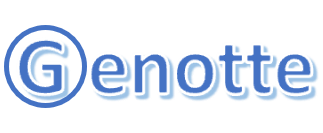Unlocking the Potential of SharePoint, Confluence, ADS/TFS, and Advanced Excel
Introduction
In today’s information-driven world, organizations face the challenge of managing and organizing vast amounts of data and knowledge effectively. Information architecture plays a crucial role in structuring, categorizing, and retrieving information, enabling seamless access to valuable insights and promoting collaboration. This one-page document highlights the benefits of leveraging popular tools such as SharePoint, Confluence, ADS/TFS, and advanced Excel in building robust information architecture solutions.
SharePoint: Centralized Collaboration and Document Management
SharePoint is a powerful platform that facilitates seamless collaboration, document management, and content sharing within organizations. By leveraging SharePoint’s features, organizations can:
- Centralize Knowledge: SharePoint serves as a centralized repository, allowing users to store, organize, and search for documents, files, and other important information. This ensures easy access to relevant resources, reducing duplication and increasing efficiency.
- Promote Collaboration: SharePoint enables team collaboration through features like document version control, co-authoring, and workflows. It enhances cross-team collaboration, encourages knowledge sharing, and facilitates real-time communication, leading to improved productivity and innovation.
- Customize Information Architecture: SharePoint provides flexibility to design information architecture tailored to organizational needs. By creating document libraries, metadata, and site structures, organizations can categorize and organize information effectively, enabling quick and intuitive navigation.
Confluence: Agile Knowledge Sharing and Documentation
Confluence, a widely used collaboration tool, empowers teams to create, share, and collaborate on knowledge repositories. Leveraging Confluence, organizations can:
- Create Knowledge Base: Confluence allows teams to create and maintain a centralized knowledge base, making information easily accessible to team members. With features like hierarchical page organization, rich text editing, and content macros, Confluence enhances documentation and knowledge sharing across the organization.
- Enable Agile Collaboration: Confluence supports Agile practices, such as Scrum and Kanban, by offering customizable templates and boards. It fosters transparency, facilitates collaboration during project planning, and helps teams track progress and make informed decisions.
- Integrate with Development Tools: Confluence seamlessly integrates with development tools like Jira and Bitbucket, enabling developers to document and track project-related information efficiently. This integration streamlines workflows, promotes collaboration between development and documentation teams, and ensures up-to-date and accurate project documentation.
ADS/TFS: Streamlined Application Development and Version Control
Application Development Systems (ADS) or Team Foundation Server (TFS) is a robust toolset used in software development. It offers:
- Version Control: ADS/TFS provides comprehensive version control capabilities, allowing developers to track changes, manage source code repositories, and collaborate efficiently. Version control ensures code integrity, simplifies collaboration among development teams, and enables efficient code merging and branching.
- Work Item Tracking: ADS/TFS facilitates work item tracking, helping teams manage and prioritize tasks, bugs, and enhancements. It enhances transparency, improves communication between teams, and provides insights into project progress and resource allocation.
- Continuous Integration and Deployment: ADS/TFS integrates with build automation and continuous integration tools, streamlining the software development and release process. It enables organizations to automate build and deployment tasks, ensuring faster and more reliable software releases.
Advanced Excel: Powerful Data Analysis and Reporting
Excel, a widely used spreadsheet tool, offers advanced capabilities for data analysis and reporting. By leveraging Excel, organizations can:
- Data Manipulation: Excel provides powerful data manipulation and analysis features, enabling organizations to cleanse, transform, and visualize data effectively. With functions like PivotTables, advanced formulas, and Power Query, Excel empowers users to make data-driven decisions.
- Visual Data Presentation: Excel offers a range of data visualization options, including charts, graphs, and conditional formatting. These features enable organizations to present complex information in a visually appealing and easily understandable format, facilitating effective communication and decision-making.
- Automated Reporting: Excel’s automation features, such as macros and Power Automate (formerly known as Flow), enable organizations to automate repetitive reporting tasks. This saves time, reduces errors, and ensures consistent and timely reporting across the organization.
